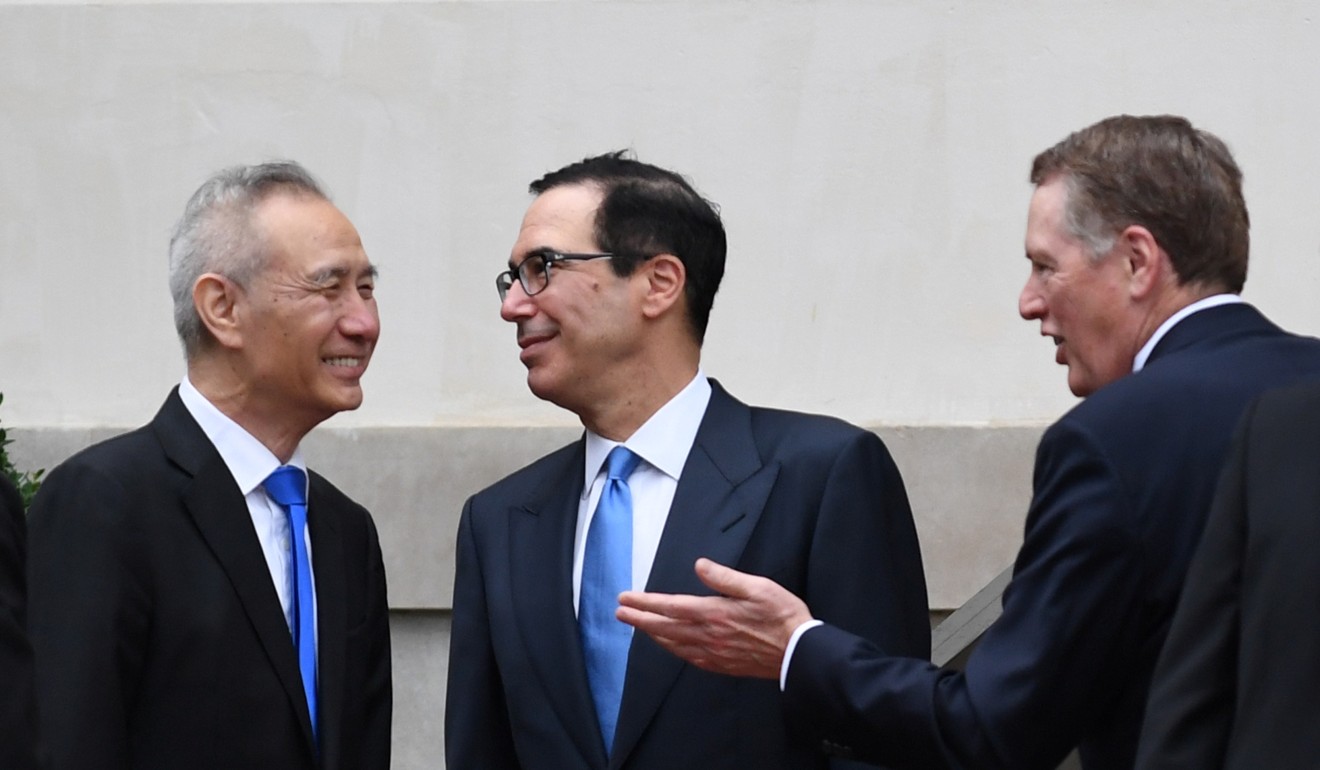
US retail group says extra tariffs on Chinese goods will cost Americans US$18 billion a year
- National Retail Federation urges Washington not to impose additional 25 per cent duties on US$300 billion of products from China
- It says new tariffs threatened by Donald Trump will be passed on to consumers and ‘it’s time to re-evaluate’ the strategy
US trade group the National Retail Federation has called on Washington not to impose additional 25 per cent tariffs on US$300 billion of Chinese goods, saying they would cost American consumers US$18 billion a year.
That is according to the results of the federation’s study released on Friday, ahead of next week’s meeting between US President Donald Trump and his Chinese counterpart Xi Jinping at the Group of 20 summit in Japan.
The study looked at key product categories for Chinese imports, calculating the estimated impact of the proposed tariffs on American consumers.
According to the research, the higher duties threatened by Trump would see Americans paying US$4.4 billion more for clothing from China. Consumers would also pay US$2.5 billion more for Chinese footwear, US$3.7 billion more for toys from the country, US$1.6 billion more for household appliances, US$4.6 billion more for furniture, and an extra US$1.2 billion on travel goods.

The federation concluded that the proposed tariffs of 25 per cent would be too costly for US retailers to absorb and would be passed on to consumers – and many shoppers could be unwilling to pay the higher prices.
US retailers had a limited ability to move away from Chinese suppliers and source goods from other countries, and it could take years to happen, the federation said.
The world’s two largest economies have been locked in a trade war for nearly a year. Negotiating teams from Washington and Beijing – led by US Trade Representative Robert Lighthizer and Treasury Secretary Steven Mnuchin, and Chinese Vice-Premier Liu He – are expected to meet in Osaka as early as Tuesday, before the talks between Xi and Trump, the South China Morning Post reported.
Trade negotiations broke down in May when the Trump administration accused Beijing of backtracking on its commitments and raised tariffs to 25 per cent on US$200 billion worth of goods. In addition, the US president has threatened to impose tariffs on another US$300 billion of Chinese imports.
But David French, senior vice-president of government relations at the National Retail Federation, said a different approach was needed.
“It’s time to re-evaluate a strategy based solely on tariffs and work with our allies to put international pressure on China,” he said.
Retailers would have no choice but to charge more for goods affected by tariffs in the short term, according to French.
“For most of the consumer products on this list, there are very few alternative sources of supply. It would be impossible for all market participants in our industry to simultaneously move sourcing to other countries. The capacity does not exist,” he said.
“In the short term, retailers would be forced to continue to use Chinese suppliers and pass on higher costs to their customers – just in time for the holiday shopping season.”
For clothing, garments produced in China accounted for 35 per cent of the total imports in the category, according to the study. The value of clothing imported from China was more than 2.5 times that of the next biggest foreign supplier, Vietnam.
Applying 25 per cent tariffs to the Chinese clothing imports would add US$4.4 billion to their cost, according to the federation. It said low-income families would be the most affected by higher prices because they spent three times as much of their after-tax earnings on clothing and services than households on higher salaries.

